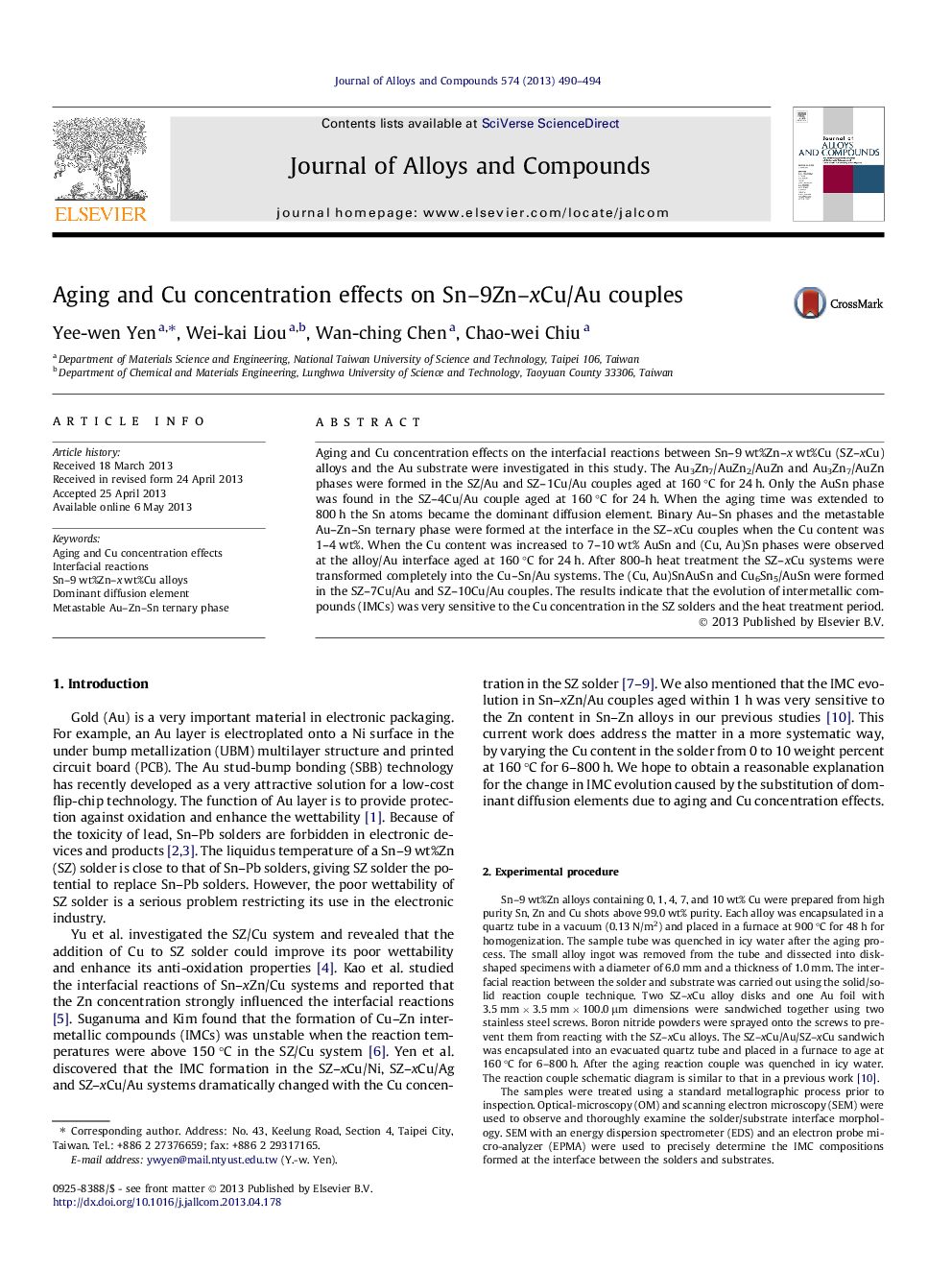| Article ID | Journal | Published Year | Pages | File Type |
|---|---|---|---|---|
| 1613615 | Journal of Alloys and Compounds | 2013 | 5 Pages |
•Sn–9 wt%Zn-xCu alloys reacted with Au substrate was first systematically investigated.•IMC formation in the SZ–xCu/Au systems is very sensitive to the Cu concentration and the aging time.•This information is very interesting and valuable for soldering community.
Aging and Cu concentration effects on the interfacial reactions between Sn–9 wt%Zn–x wt%Cu (SZ–xCu) alloys and the Au substrate were investigated in this study. The Au3Zn7/AuZn2/AuZn and Au3Zn7/AuZn phases were formed in the SZ/Au and SZ–1Cu/Au couples aged at 160 °C for 24 h. Only the AuSn phase was found in the SZ–4Cu/Au couple aged at 160 °C for 24 h. When the aging time was extended to 800 h the Sn atoms became the dominant diffusion element. Binary Au–Sn phases and the metastable Au–Zn–Sn ternary phase were formed at the interface in the SZ–xCu couples when the Cu content was 1–4 wt%. When the Cu content was increased to 7–10 wt% AuSn and (Cu, Au)Sn phases were observed at the alloy/Au interface aged at 160 °C for 24 h. After 800-h heat treatment the SZ–xCu systems were transformed completely into the Cu–Sn/Au systems. The (Cu, Au)SnAuSn and Cu6Sn5/AuSn were formed in the SZ–7Cu/Au and SZ–10Cu/Au couples. The results indicate that the evolution of intermetallic compounds (IMCs) was very sensitive to the Cu concentration in the SZ solders and the heat treatment period.
